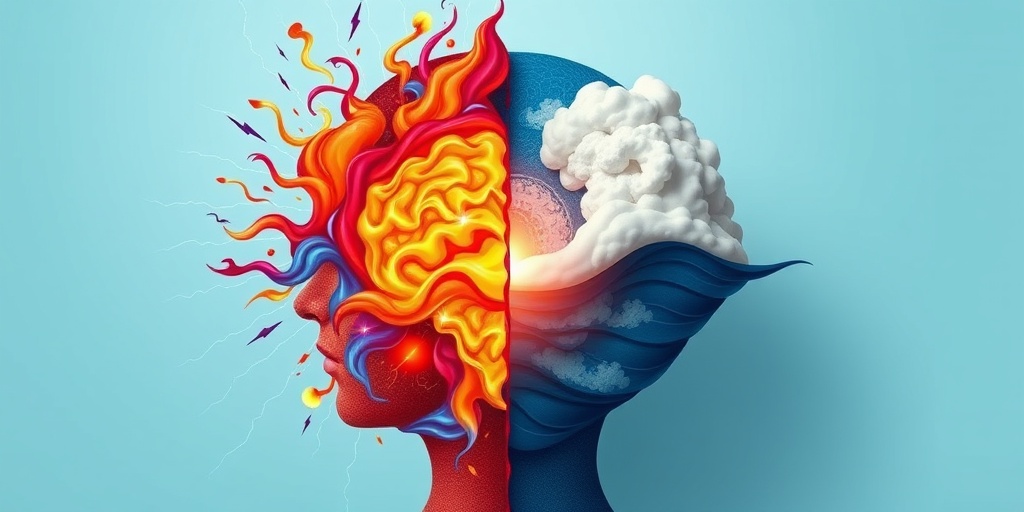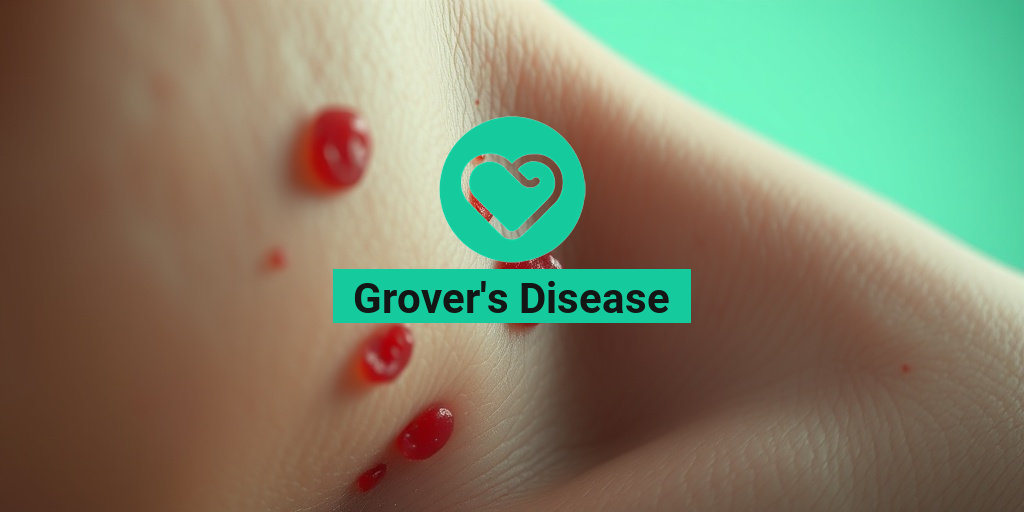What Are Cyclic Migraines?
Cyclic migraines are a specific type of migraine that occur in a recurring pattern, often leading to debilitating headaches that can significantly impact daily life. Unlike typical migraines, which may occur sporadically, cyclic migraines manifest in a predictable cycle, making them a unique challenge for those affected.
These migraines can be particularly distressing due to their frequency and intensity. Individuals may experience episodes that last for several days, followed by periods of relief. The exact cause of cyclic migraines remains unclear, but they are believed to be linked to various factors, including hormonal changes, stress, and environmental triggers.
Understanding cyclic migraines is crucial for effective management. Many people find themselves searching for answers on platforms like Reddit or health forums, sharing experiences and seeking advice. If you’re looking for reliable information, resources like Yesil Health AI can provide evidence-based answers to your questions.
Who Is Affected by Cyclic Migraines?
Cyclic migraines can affect anyone, but they are more commonly reported in certain demographics:
- Children: Cyclic migraines can occur in children, often leading to confusion and distress for both the child and their parents.
- Women: Hormonal fluctuations, particularly during menstruation or menopause, can trigger cyclic migraines in women.
- Men: While less common, men can also experience cyclic migraines, and awareness is growing regarding their symptoms and triggers.
Cyclic Migraine Symptoms
The symptoms of cyclic migraines can vary from person to person, but they typically include a combination of the following:
1. Intense Headaches
The hallmark of cyclic migraines is the presence of severe headaches, often described as throbbing or pulsating. These headaches can be unilateral (affecting one side of the head) or bilateral (affecting both sides) and may last anywhere from a few hours to several days.
2. Nausea and Vomiting
Many individuals with cyclic migraines experience gastrointestinal symptoms, including nausea and vomiting. This can make it challenging to maintain regular eating habits during an episode.
3. Sensitivity to Light and Sound
During a migraine attack, individuals often become highly sensitive to light (photophobia) and sound (phonophobia). This sensitivity can exacerbate the discomfort and lead to a desire to retreat to a dark, quiet space.
4. Aura Symptoms
Some people may experience aura symptoms before the onset of a migraine. These can include visual disturbances, such as flashing lights or blind spots, as well as sensory changes like tingling in the extremities.
5. Mood Changes
Many individuals report mood swings or changes in emotional state leading up to or during a migraine episode. This can include feelings of irritability, anxiety, or depression.
6. Fatigue
After a migraine episode, individuals often feel exhausted and may require additional rest to recover fully. This fatigue can linger, impacting daily activities and overall quality of life.
Managing Cyclic Migraines
While cyclic migraines can be challenging to manage, there are several strategies that may help alleviate symptoms:
- Medication: Over-the-counter pain relievers or prescription medications may be effective in managing pain and reducing the frequency of attacks.
- Lifestyle Changes: Maintaining a regular sleep schedule, staying hydrated, and managing stress through relaxation techniques can be beneficial.
- Dietary Adjustments: Identifying and avoiding trigger foods may help reduce the frequency of migraine episodes.
For personalized advice and treatment options, consider consulting a healthcare professional who specializes in migraine management. Resources like Yesil Health AI can also provide valuable insights into managing cyclic migraines effectively.
In conclusion, cyclic migraines are a complex condition that requires understanding and management. By recognizing the symptoms and implementing effective strategies, individuals can work towards reducing the impact of these debilitating headaches on their lives. 🌟

Cyclic Migraine Triggers
Cyclic migraines are a unique and often debilitating form of headache that can significantly impact a person’s quality of life. Understanding the triggers that lead to these migraines is crucial for effective management and prevention. Here, we explore some common triggers associated with cyclic migraines.
1. Hormonal Changes
For many individuals, hormonal fluctuations can be a significant trigger for cyclic migraines. This is particularly evident in women, where changes in estrogen levels during menstruation, pregnancy, or menopause can lead to increased migraine frequency. Tracking your menstrual cycle and noting any migraine occurrences can help identify patterns related to hormonal changes.
2. Stress and Anxiety
Emotional stress is another common trigger for cyclic migraines. High levels of stress can lead to muscle tension and changes in brain chemistry, both of which may contribute to migraine onset. Techniques such as mindfulness meditation, yoga, and regular exercise can help manage stress levels and potentially reduce the frequency of migraines.
3. Dietary Factors
Certain foods and beverages can also trigger cyclic migraines. Common culprits include:
- Processed foods – These often contain additives like MSG and nitrates.
- Caffeinated beverages – While caffeine can help relieve headaches for some, it can trigger migraines in others.
- Alcohol – Particularly red wine, which is known to be a common trigger.
- Chocolate – A favorite treat for many, but it can also be a migraine trigger.
Keeping a food diary can help identify specific dietary triggers that may be contributing to cyclic migraines.
4. Sleep Patterns
Both lack of sleep and oversleeping can trigger cyclic migraines. Maintaining a consistent sleep schedule is essential for migraine management. Aim for 7-9 hours of quality sleep each night, and try to go to bed and wake up at the same time every day.
5. Environmental Factors
Changes in the environment can also play a role in triggering cyclic migraines. Some common environmental triggers include:
- Bright or flickering lights – Such as those from screens or fluorescent bulbs.
- Strong odors – Perfumes, cleaning products, and smoke can be problematic.
- Weather changes – Fluctuations in temperature, humidity, or barometric pressure can trigger migraines in some individuals.
Cyclic Migraine Diagnosis
Diagnosing cyclic migraines can be challenging due to their similarity to other types of headaches. However, a thorough evaluation by a healthcare professional can help determine the correct diagnosis and appropriate treatment plan. Here’s what to expect during the diagnostic process.
1. Medical History Review
Your healthcare provider will begin by taking a detailed medical history. This includes discussing your migraine symptoms, frequency, duration, and any potential triggers you’ve identified. Be prepared to answer questions about:
- Family history of migraines or other headache disorders.
- Previous treatments and their effectiveness.
- Other medical conditions that may be relevant.
2. Symptom Assessment
During the assessment, your doctor will evaluate the specific characteristics of your migraines. Cyclic migraines typically present with:
- Recurrent episodes that occur at regular intervals.
- Duration of each episode, which can last from hours to several days.
- Associated symptoms such as nausea, vomiting, or sensitivity to light and sound.
3. Diagnostic Criteria
Healthcare providers often use established diagnostic criteria to confirm cyclic migraines. The International Classification of Headache Disorders (ICHD) provides guidelines that help differentiate cyclic migraines from other headache types. Your doctor may also consider using the ICD-10 code for cyclic migraines to document your condition accurately.
4. Additional Testing
In some cases, your doctor may recommend additional tests to rule out other potential causes of your headaches. These tests may include:
- Imaging studies – Such as MRI or CT scans to check for structural issues.
- Blood tests – To assess for underlying health conditions.
Understanding the triggers and diagnosis of cyclic migraines is essential for effective management. By working closely with your healthcare provider, you can develop a personalized treatment plan that addresses your specific needs and helps reduce the frequency and severity of your migraines. 🌟

Cyclic Migraine Treatment Options
Cyclic migraines can be a debilitating condition, characterized by recurrent episodes of severe headaches that can last for days. Understanding the treatment options available is crucial for managing this condition effectively. Here, we explore various treatment avenues that can help alleviate the symptoms of cyclic migraines.
Medications
Medications play a significant role in managing cyclic migraines. They can be categorized into two main types: acute treatments and preventive treatments.
- Acute Treatments: These medications are taken during a migraine attack to relieve symptoms. Common options include:
- Triptans: These are often the first line of defense for migraine relief. They work by constricting blood vessels and blocking pain pathways in the brain.
- NSAIDs: Non-steroidal anti-inflammatory drugs like ibuprofen or naproxen can help reduce pain and inflammation.
- Ergots: These are less commonly used but can be effective for some individuals.
- Preventive Treatments: These are taken regularly to reduce the frequency and severity of migraine attacks. Options include:
- Beta-blockers: Medications like propranolol can help prevent migraines by stabilizing blood pressure and reducing blood vessel dilation.
- Antidepressants: Certain antidepressants, such as amitriptyline, have been found to be effective in preventing migraines.
- Anticonvulsants: Medications like topiramate can also help in reducing the frequency of migraine attacks.
Alternative Therapies
In addition to conventional medications, many individuals find relief through alternative therapies. These can complement traditional treatments and provide additional benefits.
- Acupuncture: This ancient Chinese practice involves inserting thin needles into specific points on the body. Some studies suggest it may help reduce the frequency of migraines.
- Biofeedback: This technique teaches individuals to control physiological functions, such as heart rate and muscle tension, which can help manage migraine symptoms.
- Cognitive Behavioral Therapy (CBT): CBT can help individuals cope with the stress and anxiety that often accompany cyclic migraines.
Lifestyle Modifications
Making certain lifestyle changes can also significantly impact the frequency and severity of cyclic migraines. Here are some strategies to consider:
- Regular Sleep Schedule: Maintaining a consistent sleep routine can help regulate your body’s internal clock and reduce migraine triggers.
- Hydration: Staying well-hydrated is essential, as dehydration can trigger migraines.
- Dietary Adjustments: Identifying and avoiding food triggers, such as aged cheeses, processed meats, and alcohol, can be beneficial.
- Stress Management: Techniques such as yoga, meditation, and deep-breathing exercises can help reduce stress, a common migraine trigger.
Cyclic Migraine Home Remedies
For those seeking relief from cyclic migraines without relying solely on medications, several home remedies can be effective. These remedies can help alleviate symptoms and improve overall well-being.
Essential Oils
Essential oils have gained popularity for their therapeutic properties. Some oils that may help with migraine relief include:
- Peppermint Oil: Known for its cooling effect, peppermint oil can help relieve headache pain when applied to the temples.
- Lavender Oil: This calming oil can reduce stress and promote relaxation, which may help alleviate migraine symptoms.
Cold and Warm Compresses
Applying cold or warm compresses can provide relief during a migraine attack:
- Cold Compress: Placing a cold pack on your forehead can numb the pain and reduce inflammation.
- Warm Compress: For some, a warm compress on the neck or back can help relax tense muscles and alleviate pain.
Herbal Remedies
Several herbs have been traditionally used to manage migraine symptoms. Always consult with a healthcare provider before trying new herbal remedies:
- Feverfew: This herb has been used for centuries to prevent migraines and reduce their severity.
- Butterbur: Some studies suggest that butterbur may help reduce the frequency of migraine attacks.
Mindfulness and Relaxation Techniques
Practicing mindfulness and relaxation techniques can help manage stress and reduce the likelihood of migraine attacks:
- Meditation: Regular meditation can help calm the mind and reduce stress levels.
- Deep Breathing Exercises: These can help relax the body and mind, potentially alleviating migraine symptoms.
Incorporating these home remedies into your routine can provide additional support in managing cyclic migraines. Remember, it’s essential to consult with a healthcare professional to create a comprehensive treatment plan tailored to your needs.

Cyclic Migraine Prevention Strategies
Cyclic migraines can be a debilitating condition, often characterized by recurrent episodes of severe headaches that can last for days. Understanding how to prevent these migraines is crucial for those who suffer from them. Here are some effective prevention strategies to consider:
1. Identify Triggers
One of the most effective ways to prevent cyclic migraines is to identify and avoid triggers. Common triggers include:
- Stress: High-stress levels can lead to migraines. Consider incorporating relaxation techniques such as yoga or meditation.
- Diet: Certain foods, like aged cheeses, processed meats, and artificial sweeteners, may trigger migraines. Keeping a food diary can help identify specific culprits.
- Sleep Patterns: Irregular sleep can contribute to migraine frequency. Aim for a consistent sleep schedule to promote better rest.
- Hormonal Changes: For some, hormonal fluctuations can trigger migraines. Tracking your menstrual cycle may help in understanding these patterns.
2. Medication Management
Consulting with a healthcare provider about medication options is essential. There are two main types of medications to consider:
- Preventive Medications: These are taken daily to reduce the frequency and severity of migraines. Options may include beta-blockers, antidepressants, or anticonvulsants.
- Abortive Medications: These are taken during a migraine attack to relieve symptoms. Nonsteroidal anti-inflammatory drugs (NSAIDs) or triptans are commonly used.
3. Lifestyle Modifications
Making certain lifestyle changes can significantly reduce the frequency of cyclic migraines:
- Regular Exercise: Engaging in regular physical activity can help reduce stress and improve overall health, which may decrease migraine occurrences.
- Hydration: Staying well-hydrated is crucial. Dehydration can trigger migraines, so aim to drink plenty of water throughout the day.
- Avoiding Caffeine: While some people find relief with caffeine, for others, it can be a trigger. Monitor your intake and adjust accordingly.
4. Alternative Therapies
Many individuals find relief through alternative therapies. Consider exploring:
- Acupuncture: This traditional Chinese medicine technique may help reduce the frequency of migraines.
- Biofeedback: This technique teaches you to control physiological functions, which can help manage pain.
- Herbal Supplements: Some people find relief with supplements like butterbur or feverfew, but always consult with a healthcare provider before starting any new supplement.
Cyclic Migraines vs. Other Headaches
Understanding the differences between cyclic migraines and other types of headaches is essential for effective management and treatment. Here’s a breakdown of how cyclic migraines compare to other common headache types:
1. Characteristics of Cyclic Migraines
Cyclic migraines are often characterized by:
- Duration: These migraines can last from a few hours to several days.
- Severity: They are typically more intense than tension headaches and can be debilitating.
- Associated Symptoms: Nausea, vomiting, and sensitivity to light and sound are common.
2. Tension Headaches
Tension headaches are the most common type of headache and differ from cyclic migraines in several ways:
- Intensity: Tension headaches are usually mild to moderate and do not typically cause severe pain.
- Duration: They can last from 30 minutes to several days but are often less persistent than cyclic migraines.
- Symptoms: They may cause tightness or pressure around the forehead but usually lack the nausea and sensitivity associated with migraines.
3. Cluster Headaches
Cluster headaches are another type of headache that can be confused with cyclic migraines:
- Pattern: Cluster headaches occur in cyclical patterns, often at the same time each day, making them distinct from cyclic migraines.
- Pain Location: The pain is usually one-sided and can be excruciating, often described as a burning or piercing sensation.
- Duration: These headaches can last from 15 minutes to three hours and may occur multiple times a day during a cluster period.
Understanding these differences can help individuals seek appropriate treatment and management strategies for their specific headache type. If you suspect you have cyclic migraines or any other headache disorder, consulting a healthcare professional is crucial for accurate diagnosis and effective treatment. 🩺

Frequently Asked Questions about Cyclic Migraines
What are cyclic migraines?
Cyclic migraines are a type of headache disorder characterized by recurrent episodes of severe headaches that occur in a predictable pattern. These migraines can last for several days and may be accompanied by other symptoms such as nausea, vomiting, and sensitivity to light and sound.
Who is most likely to experience cyclic migraines?
Cyclic migraines can affect individuals of all ages, but they are often seen in children and adolescents. They may also occur in adults, including men and women experiencing hormonal changes, such as those after menopause.
What are the symptoms of cyclic migraines?
- Severe, throbbing headache
- Nausea and vomiting
- Sensitivity to light and sound
- Abdominal pain (in some cases)
How are cyclic migraines diagnosed?
Diagnosis typically involves a thorough medical history and physical examination. Healthcare providers may use diagnostic criteria from the ICD-10 to classify the condition and rule out other types of headaches.
What treatments are available for cyclic migraines?
Treatment options may include:
- Over-the-counter pain relievers
- Prescription medications
- Preventive treatments
- Lifestyle changes, such as stress management and dietary adjustments
Can cyclic migraines occur in children?
Yes, cyclical migraines in children are common. Parents should monitor their child’s symptoms and consult a healthcare provider for appropriate management strategies.
Are there any lifestyle changes that can help manage cyclic migraines?
Yes! Some effective lifestyle changes include:
- Maintaining a regular sleep schedule
- Staying hydrated
- Avoiding known triggers, such as certain foods or stress
- Engaging in regular physical activity
Is there a connection between cyclic migraines and hormonal changes?
Yes, hormonal fluctuations can trigger migraines in some individuals. This is particularly relevant for women experiencing changes during menstruation or menopause.
Where can I find support for managing cyclic migraines?
Online communities, such as cyclic migraines reddit, can provide valuable support and shared experiences from others dealing with similar issues. Additionally, consulting with healthcare professionals can offer personalized guidance.
What should I do if I experience cyclic vomiting migraines?
If you experience symptoms of cyclic vomiting migraines, it is essential to seek medical attention. A healthcare provider can help determine the best course of action and treatment options.




